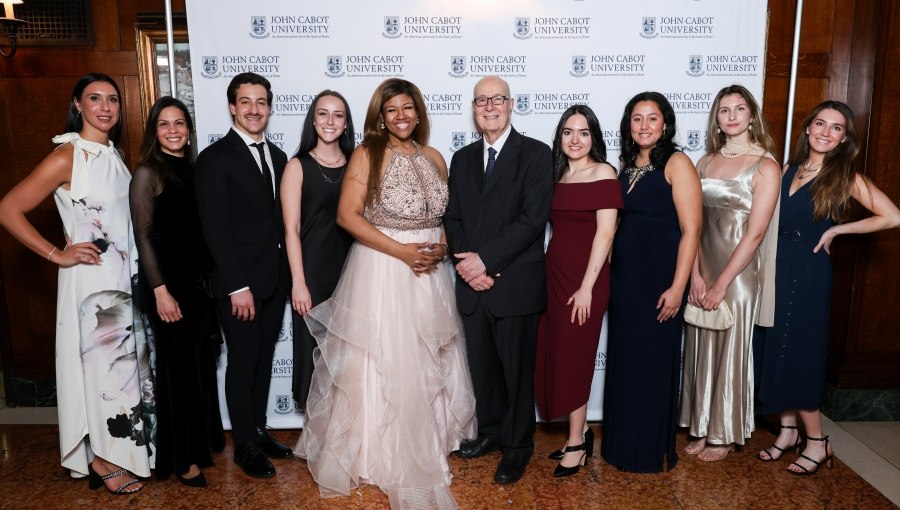The Art History Society Presents: 'Temporal Stabilities' by Liz Rideal

Artist Liz Rideal
On November 20, 2020, the 4m2 gallery debuted its first online exhibition. The event was curated by students Giulia di Fino and Roberta Imperiale, together with other Art History Society members, and with the support of faculty advisor and Head of the Art History department, Professor Inge Hansen.
In February of 2020, Liz Rideal’s ephemeral works were displayed in the 4m2 gallery, located in the upper reading room of the Frohring library. The art itself was animated by the comings and goings of students into and from the space. As the door swung open, the hanging printed silks would flutter in actions that evoked the way that the images themselves had originally been created. In March, as campuses across Italy closed down, Rideal’s works were left without an audience. To host a second exhibition in the fall would have been an anomaly, but there was a growing feeling that something was necessary to do justice to the show, and to the work of the previous curators, Maisha Lezzi and Viviana Calvagno.
With the help of JCU Professor and Coordinator of Studio Art James Gardner, it was decided that a “finissage” would be held online. The format of the event would toe the line between exhibition and forum, in order to encourage critical discussion among students, faculty, and guests.
A video featuring Liz Rideal’s works, narrated by the artist herself, was shown at the beginning of the event. The “Temporal Stabilities” project features pieces executed in various media, including photography, painting and printing. The work was a result of a collaboration between the Slade School of Fine Art (University College, London), The British School at Rome, and John Cabot University.
Liz Rideal illustrated the work leading up to her “Temporal Stabilities” project. Then, Geoff Uglow, British painter and Sainsbury Scholar at the British School at Rome, took the floor. Uglow discussed the uniqueness of Rideal’s approach. He said that her works are a perfectly balanced combination of artistic plasticity, vibrancy, and living history. He described the 4m2 Gallery as a place that merges the study hall of the library with the cultured space of an art gallery, enriching daily learning sessions with the viewing experience. Even if, according to Uglow, it is not a “perfect gallery space,” it becomes a perfect context for “absorbing” art.
Dr. Harriet O’Neill, the Assistant Director of Humanities and Social Sciences at the British School at Rome, offered valuable insights on the collaboration that gave life to “Temporal Stabilities.” She praised Liz Rideal’s determination, passion, and commitment, and the enthusiasm of the JCU Art History Society in the curation of this project.
Former 4m2 art gallery curators Viviana Calvagno and Maisha Lezzi discussed their experience working with Rideal before the lockdown. They talked about installing the exhibition and the specifics of setting up the unique space of the gallery as well as sharing Rideal’s works with the community.
The event was followed by a Q&A, where students had the opportunity to ask Liz Rideal questions about her artistic visions and plans. She admitted that digitizing exhibitions, although beneficial in reaching a larger audience, detract from the reality of both the displaying and the viewing experience. Curators Roberta Imperiale and Giulia di Fino added that, in the current challenging conditions, an online exhibition successfully fulfills its primary goal, by creating an alternative space where the artist and the community are invited to interact.
For more on Liz Rideal’s process, influences, and thoughts on art production and display during the pandemic, read her interview by Arterritory as part of their series titled, “What Artists Are Doing Now.”
(With the collaboration of Lea Ramaswamy and Aly Turcan)





